Over the last few seasons, kala cotton – a strain indigenous to India – has made an appearance across a few designer collections, enough to provoke curiosity in its re-emergence.
Kala cotton is neither new, nor a recent discovery. As a type of desi cotton – a coarse, short-staple variety of cotton native to African and Asia – it was a significant part of India’s cotton export trade to Britain at the time of colonization. Why did it disappear from the industry’s radar and what’s driving its re-emergence today? What follows is an insight into the rise, fall and potential comeback of a strain of sustainable domestic cotton.
Current state
Bhuj-based NGO Khamir works toward preserving cultural, social and economic relations within various traditional communities in the district of Kutch. It is responsible for supplying most of the yardage of kala cotton being found across collections today, sold between Rs. 300-350 per meter and woven in chevrons, diamond, checks and plain weaves. As a crop, kala cotton is hardy, rain-fed, resistant to drought and pests, and requires little attention – making it an excellent organic crop to cultivate. From a weaving standpoint, it is laborious because of its short staple length, but the textile produced is strong, soft to touch and tenacious.
Above: Handpicking of kala cotton image | Khamir
Recognizing these inherent qualities, Khamir began research in 2008. At the time, local varieties were being mixed with long staple fibers to increase yarn strength. By December 2011, a pure form of the textile was launched at a solo exhibit by Khamir called ‘Retelling The Stories of Kutch’ at Chinmaya Mission Hall, New Delhi.
Above: Farm to fabric image | sketch by Khamir
Ghatit Laheru, a senior manager at Khamir explains, “We didn’t expect any response from the fashion industry considering it (kala cotton) is a short-staple yarn,” Laheru admits, “but we have received an amazing response from designers.” This small group of designers, known for a conscious approach to material sourcing and production, have used it in recent collections, citing its unique texture as a positive. At Amazon India Fashion Week Autumn Winter 2015 , 11.11 / eleven eleven featured the fabric as denim, describing a jacket from the collection as, “comfortable, like clothing you have worn for long and that still appears completely new and raw”.
Above: image | 11.11 khadi denim jacket and jeans made with kala cotton
“Kala cotton takes dye brilliantly,” says designer Himanshu Shani of 11.11 / eleven eleven, who has spent the last few years working with it to engineer a unique textile called khadi denim. “Indigo dyeing is done in layers and layers,” he explains, “and the effect is much richer on kala cotton than normal cotton.” He remembers being pleasantly surprised with initial experiments: the first kala cotton khadi denim piece made at 11.11 was far more vibrant, in colour and texture, than samples in regular cotton. Natural dye played a role but, according to Shani, it was the cotton that made the difference.
Above: image | Towels and cushions from Stitch By Stitch
11.11 is not alone in championing kala cotton’s intrinsic value. Sourced from Khamir, designers are currently engaging and experimenting: Rashmi Varma through tailored trousers and vests, Anavila Misra through blended linen with lotus yarn, muga silk, wool and kala cotton for her A/W 2016 collection of saris. London-based Stitch by Stitch produces home furnishings of cushions and towels.
Above: image | Kala cotton trousers and vest by Rashmi Varma A/W 2015
Re-emergence
Overall, the numbers are still small. Of about 4000 kala cotton farmers in Kutch, Khamir buys cotton from 160 farmers in the Makhel pocket of Adessar – the region where Khamir’s efforts at revival are focused. Of the 600 odd weavers remaining today (down from over 2000 in the mid 1990s) about 60 engage with kala cotton in Adessar. “The revival of kala cotton on a larger scale requires consistent demand, along with protection from being copied on powerloom. There’s also the danger of organic cotton yarn being replaced by cheap non-organic cotton available in the market,” says Laheru.
Above: image | Kala cotton handspun yarns
The demand for kala cotton as a raw fibre is limited in the textile industry because of the challenges it brings in spinning and weaving fabric from it. The process is more time-consuming and requires greater effort than weaving long-staple American or genetically modified Bt cotton. It is woven by hand and the short fibres are yet to be adapted to mill technology. These shortcomings have impeded kala cotton’s progress into full-blown sustained production – and is a plausible explanation for why many are yet to even learn of its existence.
What we are seeing currently is a slow and quiet, but steady, re-emergence of kala cotton. At best, these efforts by Khamir and aforementioned designers can be categorised as the first stage of the revival, and they, the first movers in this endeavour.
History
Desi cotton strains are indigenous to Asia and Africa and have a short staple length of less than 32mm. Kala cotton is one of 20 strains of desi cotton that were once grown extensively in India. It was the traditional source of fabric yarn in pre-Independence Kutch. However, desi cotton (and with it, kala cotton) was relegated to the bottom of the textile hierarchy during colonization in India.
From the early years of the British rule in India in the 1600s until Independence in 1947, desi cotton was exported to Britain, initially as a cheaper alternative for the masses. Despite the decline in cultivation of desi cotton during colonization, a large portion of the total land used for cotton grew varieties of desi cotton. This has changed post-Independence. A brief look at the fall in its acreage up until today1 :
Above: image | The decline of desi cotton production post-Independence
Potential
“We need to look at blending options with other local natural fibres to increase its (kala cotton’s) reach,” says Laheru. In his opinion, kala cotton has ample potential to be used in home furnishings, interiors and accessories. “We require better design and product development inputs from professionals working with the fashion and textile industries,” he says, along with “a lot of technical and financial support.”
Kala cotton is relevant today because of its threefold potential:
> It sustains farmer and artisanal livelihoods. Since kala cotton does not need to be sprayed with pesticides and fertilisers and is a rain-fed crop, it becomes an excellent crop for farmers to cultivate – easily sustainable and organic.
> Its inherent attributes and provenance can enrich India’s textile heritage – both past and present.
> Kala cotton is a case study for other strands of desi cotton in different parts of the country, where small, fragmented efforts towards their reappearance have already begun.
____________
1 http://indianexpress.com/article/business/business-others/rain-fed-agriculture-seizing-the-desi-advantage-through-improved-breeding-2795954/
Disclaimer: Rashmi Varma is a client of the Border&Fall Agency.

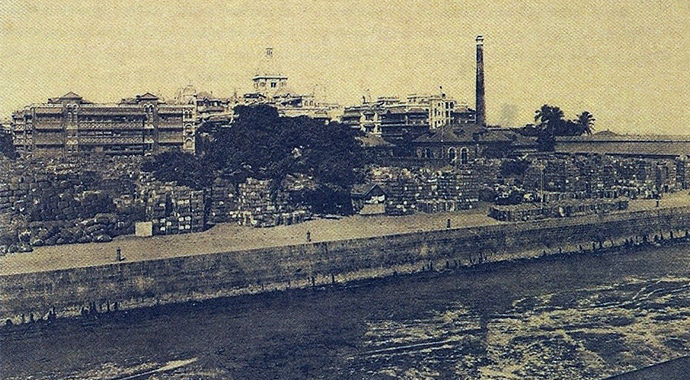

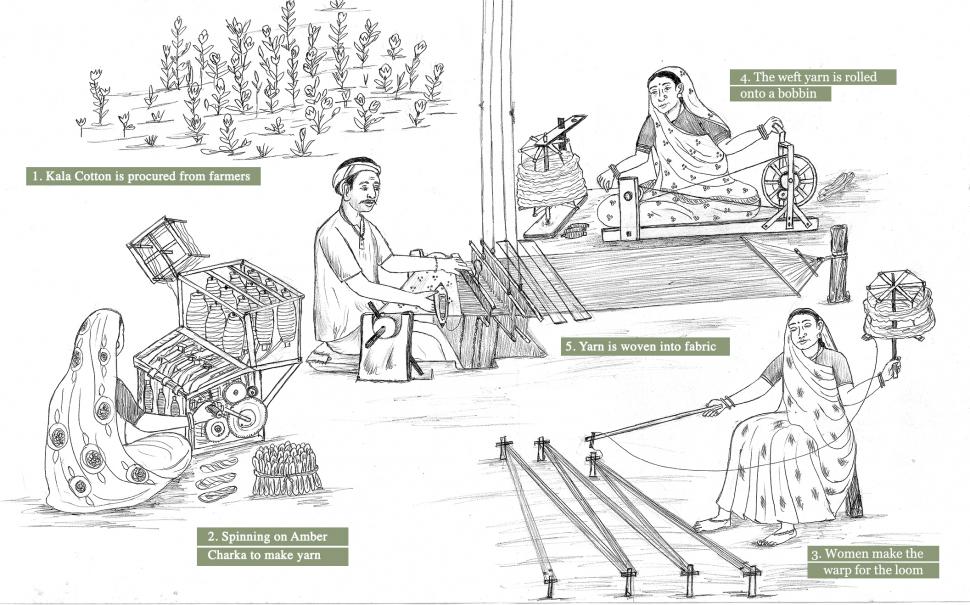
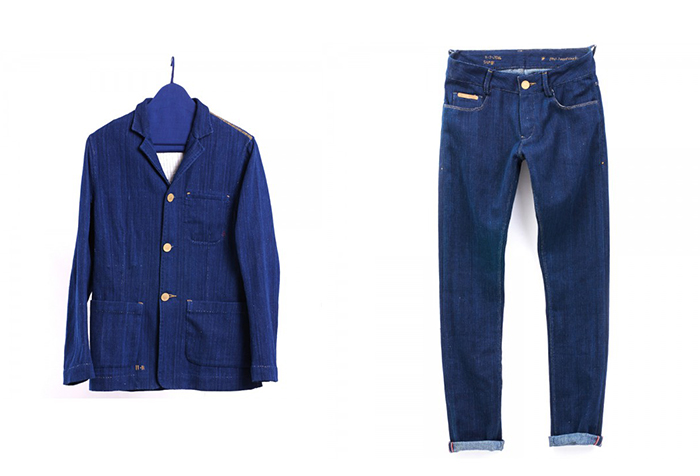
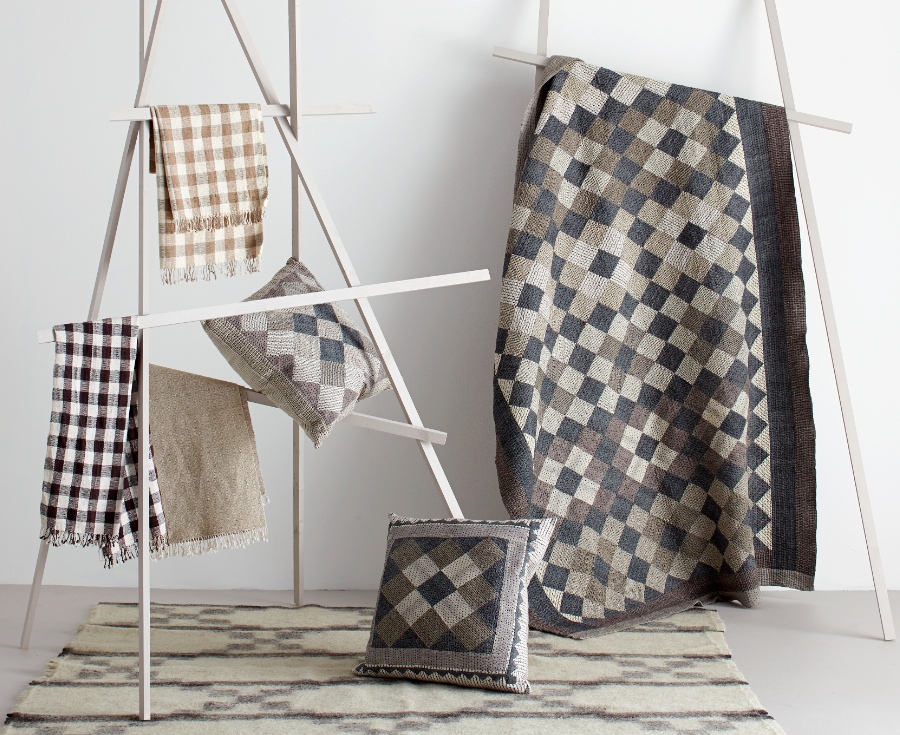
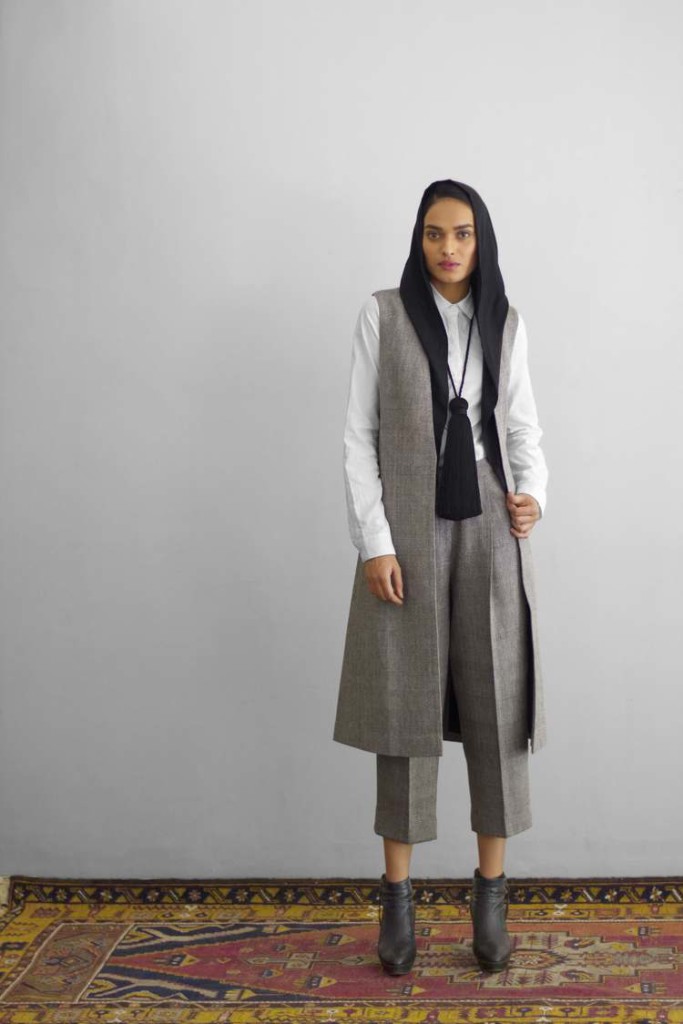
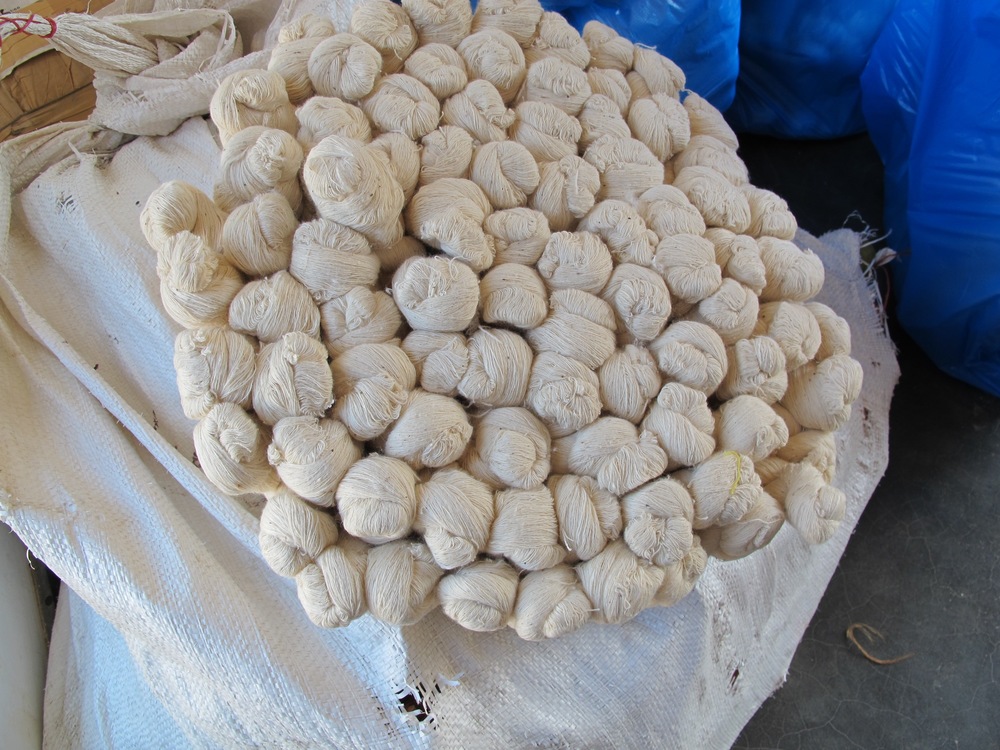
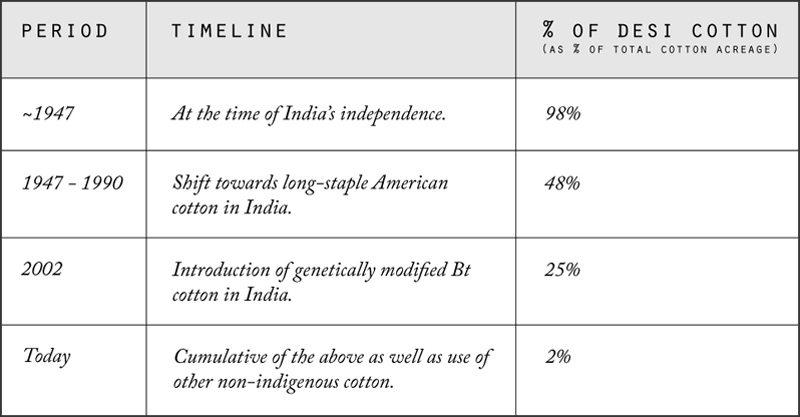
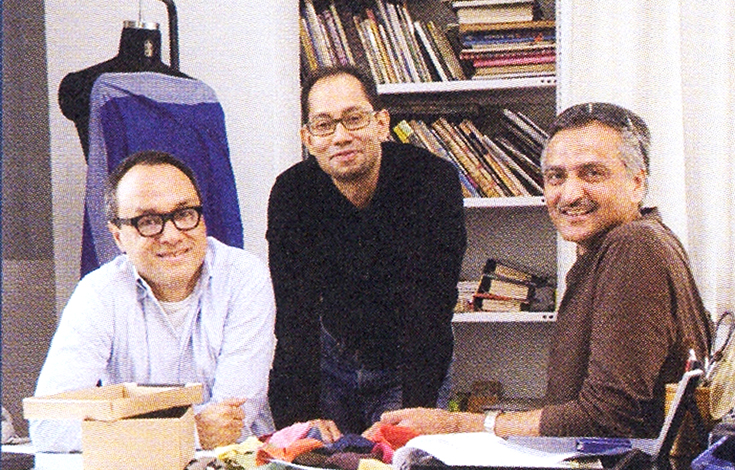


A very informative article. here at stitch by stitch in the uk we look forward to continued work with the excellent khamir organisation to develop new and more beautiful sustainable textiles for the home interior.
Good article. As you know I LOVE kala cotton since it first appeared and make a range of simple clothing and home furnishings. It does take time for the western market to accept its texture – slightly rough – but to me that is its beauty and (like most good things) it improves with age!
Very informative article. Six months back I started my clothing and home decor line exclusively for kids. https://www.facebook.com/LittleAmaraClothing/posts/381365925653224
My first experience working with kala cotton was just amazing.
Beautiful and informative article.